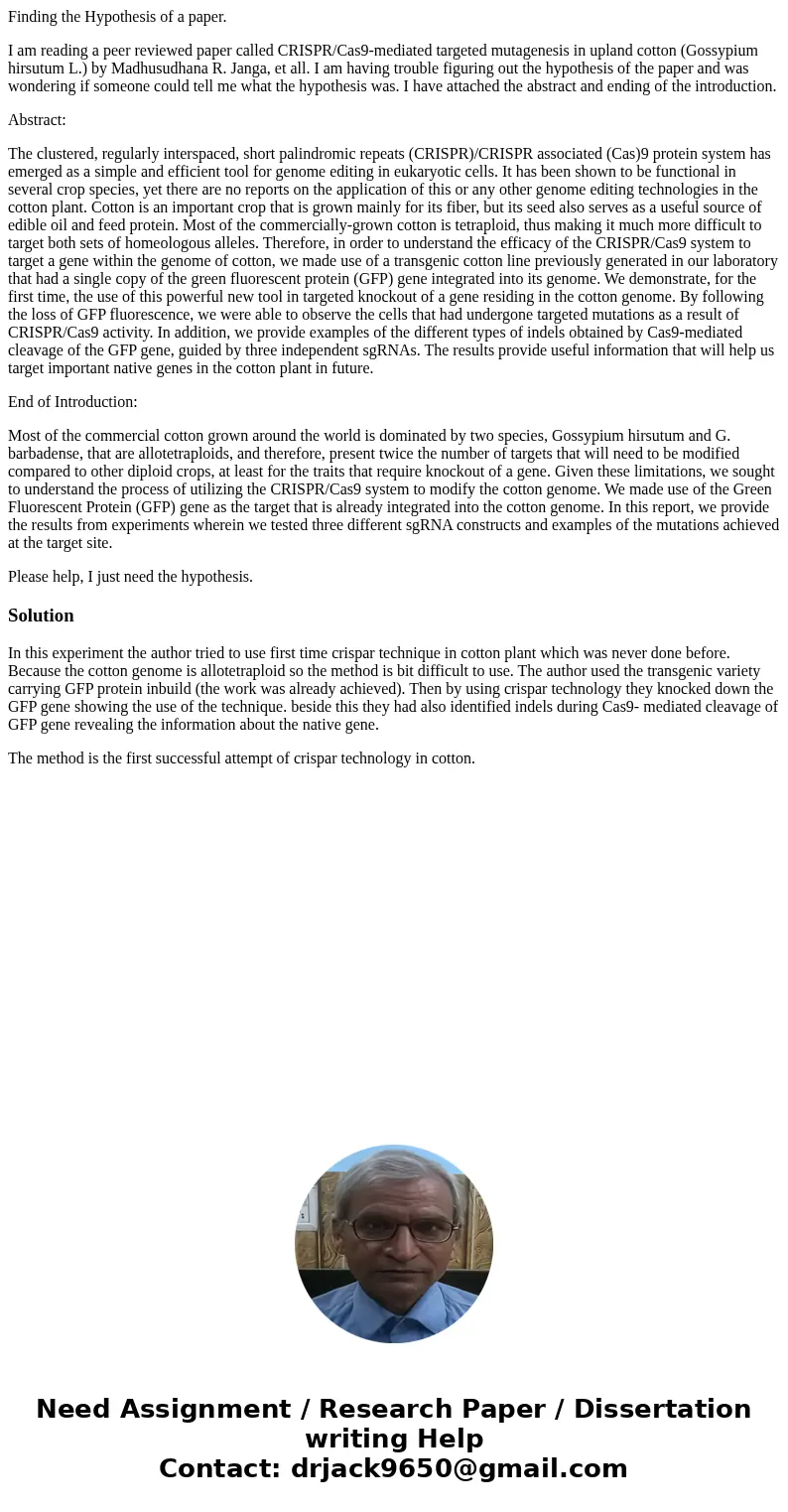Finding the Hypothesis of a paper I am reading a peer review
Finding the Hypothesis of a paper.
I am reading a peer reviewed paper called CRISPR/Cas9-mediated targeted mutagenesis in upland cotton (Gossypium hirsutum L.) by Madhusudhana R. Janga, et all. I am having trouble figuring out the hypothesis of the paper and was wondering if someone could tell me what the hypothesis was. I have attached the abstract and ending of the introduction.
Abstract:
The clustered, regularly interspaced, short palindromic repeats (CRISPR)/CRISPR associated (Cas)9 protein system has emerged as a simple and efficient tool for genome editing in eukaryotic cells. It has been shown to be functional in several crop species, yet there are no reports on the application of this or any other genome editing technologies in the cotton plant. Cotton is an important crop that is grown mainly for its fiber, but its seed also serves as a useful source of edible oil and feed protein. Most of the commercially-grown cotton is tetraploid, thus making it much more difficult to target both sets of homeologous alleles. Therefore, in order to understand the efficacy of the CRISPR/Cas9 system to target a gene within the genome of cotton, we made use of a transgenic cotton line previously generated in our laboratory that had a single copy of the green fluorescent protein (GFP) gene integrated into its genome. We demonstrate, for the first time, the use of this powerful new tool in targeted knockout of a gene residing in the cotton genome. By following the loss of GFP fluorescence, we were able to observe the cells that had undergone targeted mutations as a result of CRISPR/Cas9 activity. In addition, we provide examples of the different types of indels obtained by Cas9-mediated cleavage of the GFP gene, guided by three independent sgRNAs. The results provide useful information that will help us target important native genes in the cotton plant in future.
End of Introduction:
Most of the commercial cotton grown around the world is dominated by two species, Gossypium hirsutum and G. barbadense, that are allotetraploids, and therefore, present twice the number of targets that will need to be modified compared to other diploid crops, at least for the traits that require knockout of a gene. Given these limitations, we sought to understand the process of utilizing the CRISPR/Cas9 system to modify the cotton genome. We made use of the Green Fluorescent Protein (GFP) gene as the target that is already integrated into the cotton genome. In this report, we provide the results from experiments wherein we tested three different sgRNA constructs and examples of the mutations achieved at the target site.
Please help, I just need the hypothesis.
Solution
In this experiment the author tried to use first time crispar technique in cotton plant which was never done before. Because the cotton genome is allotetraploid so the method is bit difficult to use. The author used the transgenic variety carrying GFP protein inbuild (the work was already achieved). Then by using crispar technology they knocked down the GFP gene showing the use of the technique. beside this they had also identified indels during Cas9- mediated cleavage of GFP gene revealing the information about the native gene.
The method is the first successful attempt of crispar technology in cotton.

 Homework Sourse
Homework Sourse